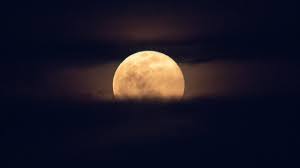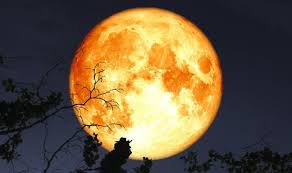
There are two supermoons in 2021, and the next one is tonight.

A supermoon is a full moon that appears larger than a typical full moon due to it being closer to Earth.
- Broad Definition: A supermoon is a new or full moon that occurs around the same time as perigee (the point in the Moon’s orbit where it is closest to Earth). By this definition, there can be several supermoons in a year.
- Strict Definition: A supermoon is the single closest new moon and full moon of the year. By this definition, there can be only two supermoons each year (a full moon supermoon and new moon supermoon).
Another measure that’s used to determine if a full moon is a supermoon is its physical distance from Earth. The exact distance cutoff varies, but generally, adheres to the idea that a full moon occurring at a distance closer than 224,000 miles (360,000 km) is considered a supermoon.
| Name | Date | Distance from Earth |
|---|---|---|
| Full Pink Moon | April 26 at 11:33 P.M. EDT | 222,211.7 miles (357,615 km) |
| Full Flower Moon | May 26 at 7:14 A.M. EDT | 222,116.6 miles (357,462 km) |
| Perigee distance data courtesy of Fred Espenak, www.Astropixels.com. |
May’s full Moon is particularly notable for two reasons:
- It’s the closest supermoon of the year, sitting at a distance of 222,116.6 miles from Earth—about 100 miles closer than April’s supermoon.
- It coincides with a total lunar eclipse in some areas, which means that it will take on a reddish hue during the eclipse’s maximum. In other words, it will be a “blood moon.”
The eclipse will only be visible in some parts of the world, unfortunately. If you’re located in western North America, however, you’re in luck.
WHY DO SUPERMOONS OCCUR?
It all comes down to the fact that the Moon’s orbit around Earth is not a perfect circle—in fact, it’s an elliptical (oval) shape.
Because of this, the Moon’s distance from Earth changes as it travels around our planet. Additionally, Earth doesn’t sit directly in the middle of this elliptical orbit, so there are points in the Moon’s orbit where it is closest and farthest from Earth. These points are called perigee and apogee, respectively.
- Perigee is the point in the Moon’s orbit where it is closest to Earth.
- Apogee is the point in the Moon’s orbit where it is farthest from Earth.
The Moon makes one full orbit around Earth in about 29.53 days, which means that it reaches its perigee and apogee points about once a month. When this occurs at the same time as a full moon, it’s called a perigee syzygy—or, more commonly, a supermoon!
- “Syzygy” is the astronomical term for when three or more celestial bodies (such as the Sun, the Moon, and Earth) line up. When the Sun, Earth, and Moon form a syzygy, we experience a full or new moon, depending on whether the Moon is between the Sun and Earth or Earth is between the Sun and the Moon.
Supermoon is not an official astronomical term, it was coined by astrologer Richard Nolle in 1979.
At the time, Nolle defined a supermoon as “a new or full moon which occurs with the Moon at or near (within 90 percent of) its closest approach to Earth in a given orbit.”
Given that a supermoon full moon is closer to Earth than a normal full moon, it does appear larger about 7 percent larger, which is nearly impossible to perceive. This means that the difference between a full moon at perigee and a full moon at apogee can be up to 14 percent which is significant.

If you want to be guaranteed of seeing a huge-looking Moon, it’s easy, simply watch the Moon when it’s rising or setting.
A Moon near the horizon will always look bigger due to a phenomenon called the Moon illusion, which makes our minds exaggerate the size of objects near the skyline.



